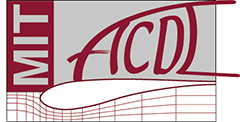Abstract: In this talk, I will present some recent results that we have obtained with our element-based Galerkin (EBG) nonhydrostatic atmospheric models. Two models will be discussed: NUMA and CLIMA. The NUMA model is the computational engine inside of the U.S. Navy’s NEPTUNE next-generation weather forecast system while CLIMA is the dynamical core inside of the ClimateMachine climate modeling system. The emphasis of this talk is on how we have been able to push high-order EBG methods to operational and industrial-type applications and what we need to do to make these models more competitive with the current state-of-the-art models for these applications. Topics that will be discussed iinclude (1) the general numerics of the models including the time-integration strategies, (2) process studies in weather prediction and climate simulations including turbulence closures, and (3) computational performance on GPU computers.
Bio: Frank Giraldo is a Distinguished Professor of Applied Mathematics at the Naval Postgraduate School (NPS) and Adjunct Professor of Applied Mathematics at the Baskins School of Engineering at the University of California at Santa Cruz (UCSC). He and his team built the NUMA model using the element-based Galerkin (EBG) methods described in his textbook “Introduction to Element-based Galerkin Methods using Tensor-Product Bases: Analysis, Algorithms, and Applications” (Springer December 2020); NUMA is a Navier-Stokes solver used for atmospheric, ocean, and fluid dynamics simulations. Frank and colleagues at NPS helped develop the ClimateMachine atmospheric model, which is an open source discontinuous Galerkin nonhydrostatic atmospheric model. Frank and colleagues hosted the 2012 Gene Golub SIAM Summer School on Simulation and Supercomputing in the Geosciences where EBG methods was one of the topics of the summer course. In addition, Frank has served on the National Earth Systems Prediction Capability working groups for over 10 years, and has served on the Department of Energy’s INCITE panels for over 5 years (including chairing the committee the past 3 years).

